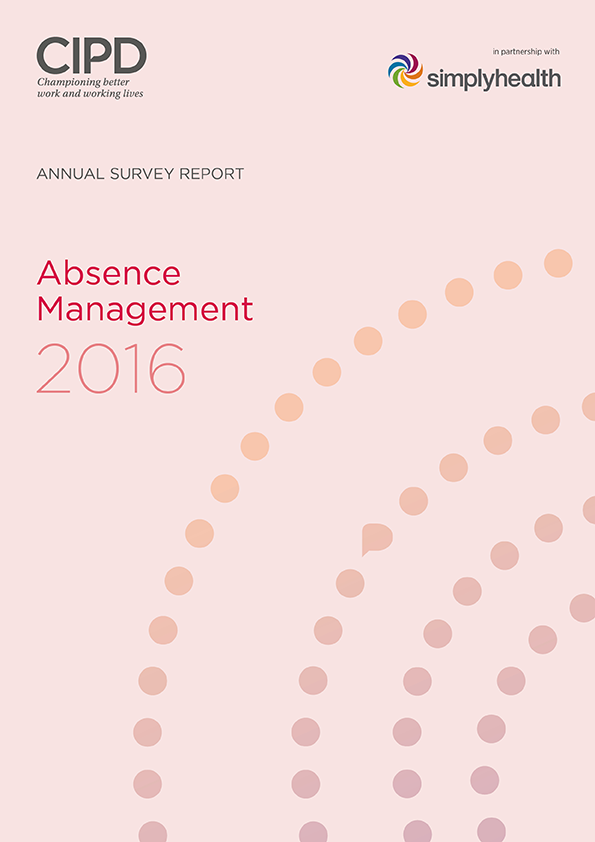Report: 2016 CIPD Absence Management Survey
Key findings:
Absence Levels
- Absence is at its lowest level for 7 years and has decreased to an average of 6.3 days a year per employee compared to 6.9 days per employee in 2015
- Absence levels tend to be higher in larger organisations. Only 4 days per year, per employee are lost because of absence in organisations with less 50 employees compared to 9.4 days lost for companies with over 5,000 employees
- Manual workers tend to have 2.1 days more absence than non-manual workers
Cost of absence
- Only a third of organisations monitor the cost of employee absence
- The public sector and larger organisations are more likely to monitor absence. 55% of public sector organisations do so compared with an average of 33% for the private sector. 72% of organisations with over 5,000 employees monitor absence compared to only 22% of organisations that have less than 50 employees
- The overall average cost of absence per employee per year is £522 compared to £554 in 2015
Causes of absence
- Minor illness is the most common cause of short term absence followed by stress
- Stress, mental health issues, and acute medical conditions are the most common cause of long term absence
- A quarter of organisations cite non genuine sickness or pulling a sickie as one of their top five causes of absence
Managing absence
- Almost all organisations have a written absence/attendance management policy
- Over a quarter of organisations’ report absence management as one of their top 3 people management priorities
- The most common method for managing short term absence are return to work interviews, trigger mechanisms to review attendance and giving sickness information to line managers
- The absence methods that organisations rank as most effective are: occupational health involvement, return to work interviews and trigger mechanisms
Work related stress
- Nearly a third of respondents report that stress related absence in their organisation has increased in the past year
- Stress is now the most common cause of long term absence and the second most common cause of short term absence after minor illnesses
- Just 1 in 9 of organisations report that stress related absence has decreased
- Workload is the most common cause of stress related absence followed by non-work relationships and management style
- Just over three fifths of organisations are taking steps to identify and reduce stress in the workplace
- A third of those that report stress as one of their top 5 causes of absence are not taking any steps to address it
- Common methods for reducing stress related absence include: staff surveys, flexible working/improved work life balance options, risk assessments and stress audits







